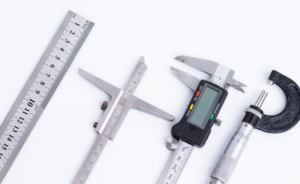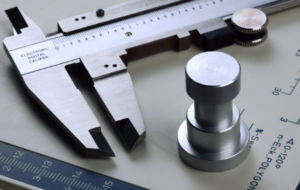Table of Contents
If you need to measure something, say the distance between two points or ingredients for a recipe, chances are you’d use Metric units like meters and grams. The reason is that the Metric System is the most universally adopted system of measurement throughout the world.
Despite the Metric System being used by so many countries, the Imperial System is still prevalent in daily life. For example, old recipes are likely to use ounces, and therefore, you’d need to convert the measurement to its Metric equivalent, which is grams.
For this reason, it’s important to learn the basics of the Imperial System—doing so will make your life easier. What better way to learn how to do something than to turn to tech giants like Google? And when it comes to learning about the Imperial System, the internet seems to have some burning questions in need of answers.
New research by the folks behind the online unit conversion tool Unit Converters has revealed the most googled questions about the Imperial System. We’re going to answer these questions and, in doing so, provide you with all you need to know about the Imperial System of measurements.
What Are the Most Googled Questions About the Imperial System?

We’ve got a list of the top five most googled questions about the Imperial System of measurements. To help you understand what it is and how it works, we’re going to run you through each question and answer it.
So, let’s jump in!
1. What countries use the Imperial System?
The Imperial System is the official system of measurement in only three countries: the United States, Myanmar, and Liberia. However, it is also commonly acknowledged that the United States and Great Britain use both the Metric System and the Imperial System, albeit unofficially.
On paper, the US uses the US Customary System, which is derived from the British Imperial System. Due to this, you’ll find that in the US, speed limits are written in miles per hour, and if you fill your vehicle with gas, it’ll be measured by the gallon.
This said, US Customary units have been defined in metric units since the 19th century, and therefore, both the Imperial and Metric systems are taught in schools. On the other side of the pond, the UK officially uses the Metric System and has done since joining the European Union in 1965.
However, both Imperial and Metric units are still very prevalent in daily life. For example, bottles of milk will are sold in pints which is an Imperial measurement, whereas sugar is sold in grams which is Metric.
Additionally, since leaving the EU in 2020, the British government has been exploring the concept of rewriting laws that ban the sale of certain goods of Imperial Units of measurement. They argue that the Imperial System is a fundamental part of British culture and should be officially reinstated.
2. What is the Imperial System?

The Imperial System is a measurement system originally used in Britain (and the commonwealth countries) between 1824 and 1965—hence why it is also called the British Imperial System.
The Imperial System can be traced back thousands of years, and there are many units that form part of the system, including the following:
- Length: mile, yard, foot, inch, barleycorn, chain, furlong, nautical mile, link, rod, fathom.
- Mass or weight: ton, hundredweight, pennyweight, ounce, pound, slug, quarter, dram, grain, stone.
- Area: square mile, rood, acre, perch.
- Volume: fluid ounce, gill, pint, minim, quart, gallon, cup, bushel, peck, fluid ounce, fluid dram
3. Why does America use the Imperial System?

America uses the US Customary System (based on the British Imperial System) because of its prevalence in the manufacturing industry. The US Customary System was introduced during the Industrial Revolution to standardise measurements, and it has remained in place to this day.
There are two main reasons why the US has not adopted the Metric System. The first reason is that many fast growing industries have rejected proposals for the conversion to Metric as it would be too expensive to convert all the current equipment and machinery that is set to USCustomary measures.
The second reason is that the use of Metric units is not mandatory in the US, so there is no legal requirement or incentive to change a functioning system.
4. Who invented the Imperial System?
Despite what the name suggests, the British Imperial System was not technically invented in Britain. Rather it is a culmination of units and measurements, some of which can be dated back thousands of years to the Egyptians, Anglo-Saxons, and Romans.
For example, Ancient Romans used a standard unit of length called the ‘pes’, which means foot. However, the British standardised these measurements and formally adopted them as the official system of measurement in 1824.
5. When was the Imperial System invented?

The Imperial System was officially established in 1824 when the Weights and Measures Act was introduced. The act was designed to establish precise definitions for some of the existing units of measurement and simplify others. The latter reason led to the single Imperial gallon being created to replace several other gallon measurements (wine, ale, and corn/wheat).
The Weights and Measures Act also introduced two new basic standard units: the standard Imperial yard and the troy pound.
Author Profile

- Guest Blogger & Outreach Expert - Interested in Writing Blogs, Articles in Business Niche | News Journalist By Profession in the United Kingdom
Latest entries
 TravelJanuary 7, 2026Key Considerations When Installing Temporary Barriers for Roadworks
TravelJanuary 7, 2026Key Considerations When Installing Temporary Barriers for Roadworks BusinessNovember 21, 2025A Practical Guide to Using LMS Platforms for Better Onboarding
BusinessNovember 21, 2025A Practical Guide to Using LMS Platforms for Better Onboarding EducationNovember 17, 2025Choosing the Right AI Course for Your Child: A Parent’s Guide
EducationNovember 17, 2025Choosing the Right AI Course for Your Child: A Parent’s Guide FinanceSeptember 19, 20257 Paid Advertising Mistakes That Drain Your Marketing Budget
FinanceSeptember 19, 20257 Paid Advertising Mistakes That Drain Your Marketing Budget





